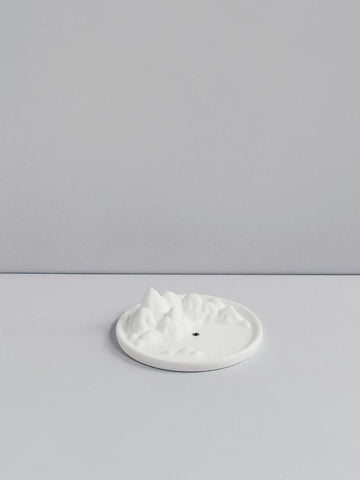How Smoke Detectors Actually Work
To understand if incense can trigger a fire alarm, we need to first understand how smoke detectors function.
Types of Smoke Detectors:
-
Ionization Detectors:
These are more sensitive to small particles, typically from flaming fires. They detect changes in electrical current caused by smoke entering an ionized air chamber. -
Photoelectric Detectors:
These respond better to larger smoke particles, such as those from smoldering fires. They use a light beam that, when disrupted by smoke, sets off the alarm.
Both require a significant amount of smoke to be triggered.
How Much Smoke Does Incense Actually Produce?
Now let’s compare incense to the type of smoke that sets off alarms.
Stick Incense (With Bamboo Core)
-
Moderate smoke output
-
Slightly stronger scent
-
Still unlikely to set off alarms unless multiple are burned directly under a detector
Solid Stick Incense (Without Bamboo Core)
-
Minimal smoke
-
Softer, more refined scent
-
Designed specifically for indoor, low-smoke use
-
Extremely unlikely to trigger an alarm
Backflow Incense Cones
-
Visibly thick smoke, but it flows downward
-
Typically used in small quantities
-
Smoke stays low to the burner, not rising to ceiling detectors
The key takeaway: The smoke output from most incense types—especially solid sticks and backflow cones—is too small and too light to trigger alarms under normal conditions.
✨ Interested in low-smoke incense designed for peaceful indoor use? Click here to browse options
Why Incense Usually Doesn’t Set Off Fire Alarms
1. Smoke Volume Is Too Low
Incense burns slowly and gently. A single stick produces a narrow column of smoke, which disperses before reaching the ceiling.
2. Detectors Are On Ceilings
Most smoke detectors are placed high up, usually in the middle of the ceiling. Incense smoke rarely rises far or thick enough to reach the detector's sensing threshold.
3. Proper Incense Is Designed for Comfort
Natural incense is crafted to be subtle, relaxing, and non-invasive—unlike heavy smoke from burning food or open flames.
4. Ventilation Plays a Role
In most homes or apartments, even without an open window, the natural air circulation keeps incense smoke from concentrating.
But When Could Incense Trigger a Fire Alarm?
While rare, under very specific conditions, incense might cause a false alarm:
-
You burn multiple incense sticks at once in a small, closed room
-
The incense is placed directly underneath a smoke detector
-
You use low-quality incense with synthetic chemicals that emit dense smoke
-
You light incense next to or below an overly sensitive photoelectric detector
Never hold a smoke detector close to burning incense to "test" it—this creates an unnatural situation where any smoke source, even a candle, could cause an alert.
Using Incense in Apartments and Hotels
Can incense set off hotel smoke alarms?
In most hotels, the smoke detectors are designed to ignore light, natural smoke from incense or candles. However, each property is different—some newer systems are hyper-sensitive, especially in non-smoking rooms.
Tips to stay safe in an apartment or hotel:
-
Burn incense away from detectors
-
Open a window or use a fan
-
Choose low-smoke incense
-
Burn only one stick or cone at a time
Incense Safety Tips (So You Never Have to Worry)
-
Use a proper holder
-
Burn incense in a well-ventilated area
-
Never leave incense burning unattended
-
Keep away from flammable objects (like curtains or papers)
-
Choose incense labeled low-smoke, natural, or handcrafted
Want to enjoy incense with even less smoke and more natural aroma? There are varieties handcrafted for indoor peace and safety.
👉 Discover handcrafted options here
💡 Pro Tip: Choose the Right Type of Incense
Here’s a quick comparison to help you make the right choice:
| Type | Smoke Level | Fire Alarm Risk | Notes |
|---|---|---|---|
| Stick (Bamboo Core) | Moderate | Very Low | Traditional, strong scent |
| Solid Stick | Low | Extremely Low | Ideal for apartments |
| Backflow Cone | Medium (but localized) | Low | More visual than sensory |
| Coil or Resin | Medium to high | Moderate | Not ideal near detectors |
Does Incense Set Off Fire Alarms?
No, under normal use, incense sticks and cones do not produce enough smoke to activate a fire alarm—especially not when burned responsibly.
Unless you're doing something unusual like burning a pile of incense directly under a detector or filling a small, sealed room with heavy smoke, your incense ritual is completely safe.
That said, it's always smart to:
-
Use natural, low-smoke incense
-
Burn one stick or cone at a time
-
Avoid placing it directly under ceiling-mounted detectors
With those simple steps, you can enjoy the aroma, calm, and sensory experience of incense—without fear of triggering alarms.
Ready to Explore the World of Low-Smoke, Natural Incense?
There’s a growing trend of incense made for modern, indoor environments—handcrafted, minimal smoke, and beautifully blended aromas.
If you’re curious about low-smoke options made from wood-based ingredients like sandalwood and agarwood, paired with natural top notes like tea or coffee, you can check out some thoughtfully crafted incense here.
Enjoy your space. Breathe in peace.
And let the fire alarm stay silent—where it belongs.










